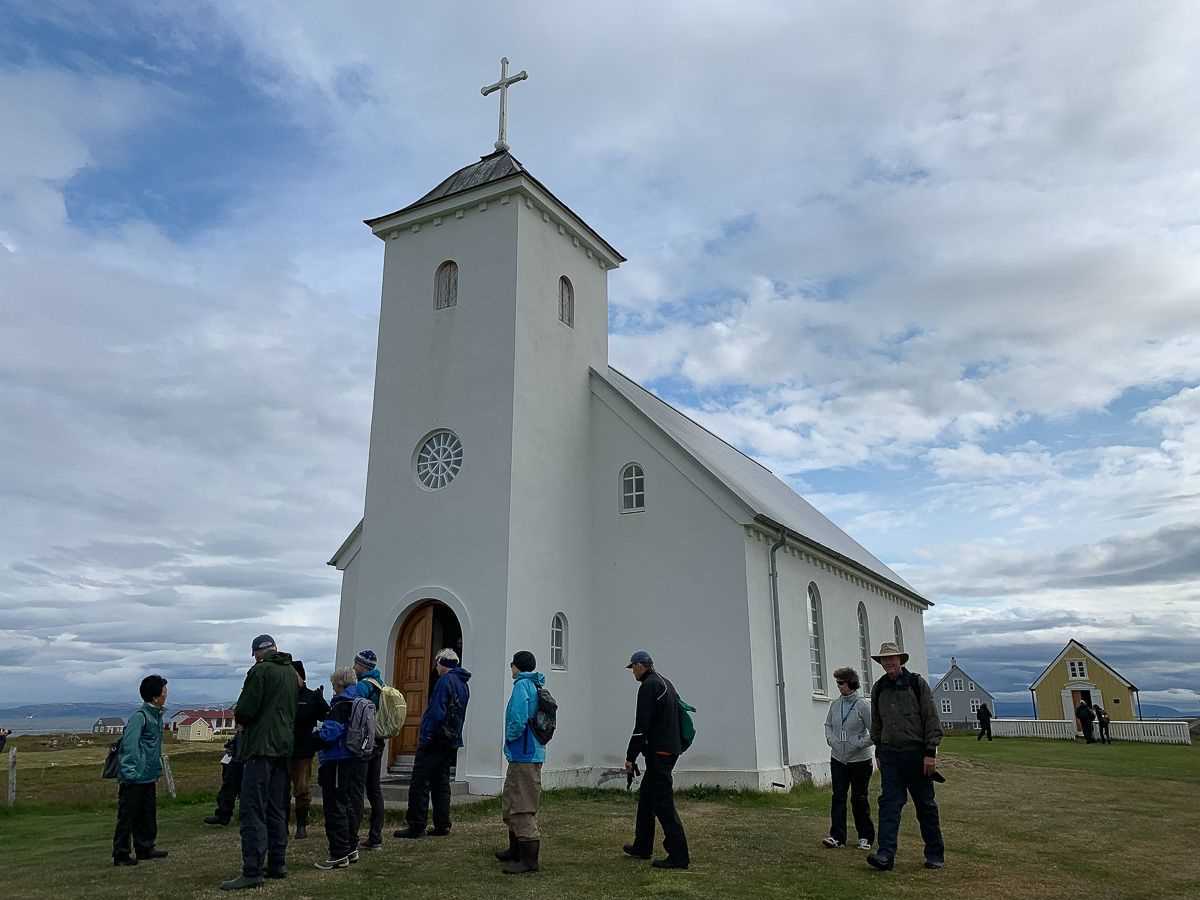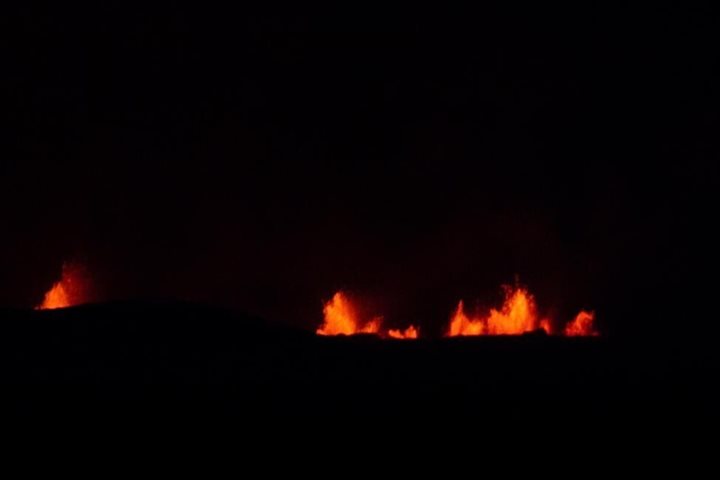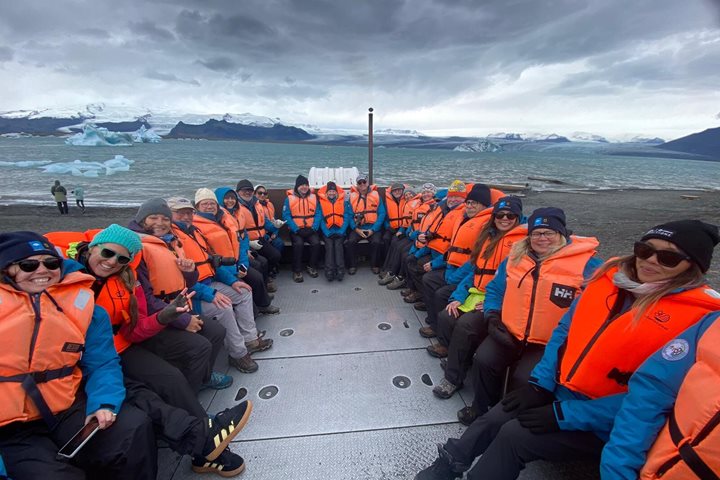Our first port of call was Flatey, the largest and most populated island in the broad fjord of Beiðafjӧrður on the jagged northwest coast of Iceland. The island’s origins lie in deep geological time as a collapsed caldera, but to the earliest Icelandic settlers in the 10th century, its fertile soils, rich fishing grounds, and relatively mild climate at the tail end of the North Atlantic Drift made this a highly desirable location. We landed by Zodiac on a beach and set off on guided nature walks past arctic terns, noisily defending their nesting areas in the grassy meadows from one another, and onto crumbling cliffs where the burrowing puffins made their homes for the breeding season. The distinctive buzz of the snipe’s mating display was heard above us and there were numerous sightings of black guillemots, oystercatchers, and occasional redshanks.
The Lutheran church on the brow of the hill contained a wonderful mural executed by a vising Catalan artist, Baltasar Sander, who offered to paint the mural in exchange for board and lodging on the island back in the 1990s. Christ is depicted wearing an Icelandic sweater and a white-tailed eagle soars above his head. The mural recounts the history of the island from pre-Christian Viking days, through Iceland’s incorporation into western Christendom and subsequent adoption of Lutheranism in the 16th century. The island is famous throughout Iceland and beyond as the home of the Flateyjarbók, the largest illuminated manuscript to be written in Icelandic. In private possession on the island for centuries, the manuscript was coveted by the Danes who eventually acquired it from its owner in exchange for an area on the mainland larger than the island itself. Following independence, negotiations opened with Denmark that culminated in the return of the manuscript, to great national rejoicing in 1971. Today it has pride of place in the Culture House in Reykjavik. A facsimile of the Flateyjarbók is housed in the delightful bijou wooden building behind the church, Iceland’s oldest public library, the size of a garden shed but containing a fine selection of books in Icelandic on local history topics and, of course, the sagas. Thanks to our ethnomusicologist, we were treated to a concert by a fine trio of Icelandic folk musicians in the village hall.
Late afternoon, following our repositioning to the dramatic, towering Látrabjarg cliffs, Zodiac cruises were offered to view what has often been described as an ornithological high-rise apartment building, with numerous bird species occupying different ledges. From top to bottom, we observed guillemots, kittiwakes, fulmars, and razorbills with numerous puffins in furious flight to and from their burrows on the gentler slopes atop the cliffs. A richly rewarding day that ended with lively conversation and cocktails before the captain’s welcome dinner.







